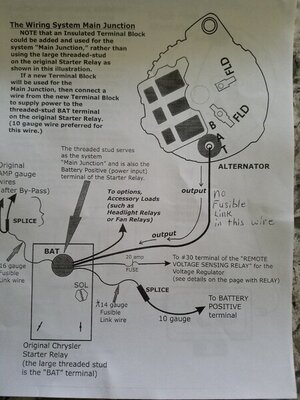Nacho-RT74
Well-Known Member
I don't get the reasoning about eliminate the field wire going throught the bulkhead, because the field wire is spliced on to the RUN circuit which still runs through the bulkhead.
The wire being eliminated from the bulkhead ( hence also from ign switch ) it was the Ballast bypass, being taken from an extra prong on starter relay. It was also added at ign switch an extra ACC source wire for several accesories into the cab
The wire being eliminated from the bulkhead ( hence also from ign switch ) it was the Ballast bypass, being taken from an extra prong on starter relay. It was also added at ign switch an extra ACC source wire for several accesories into the cab

















